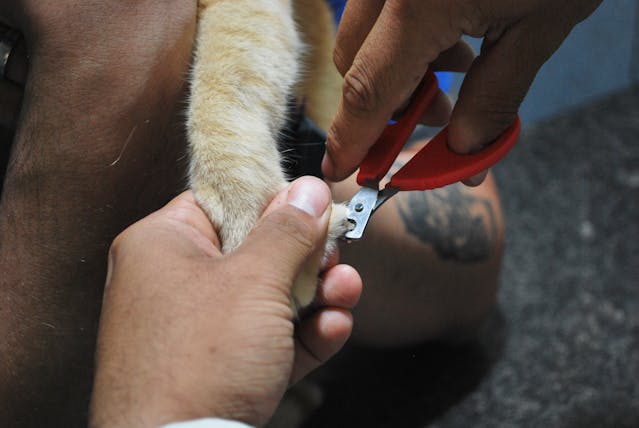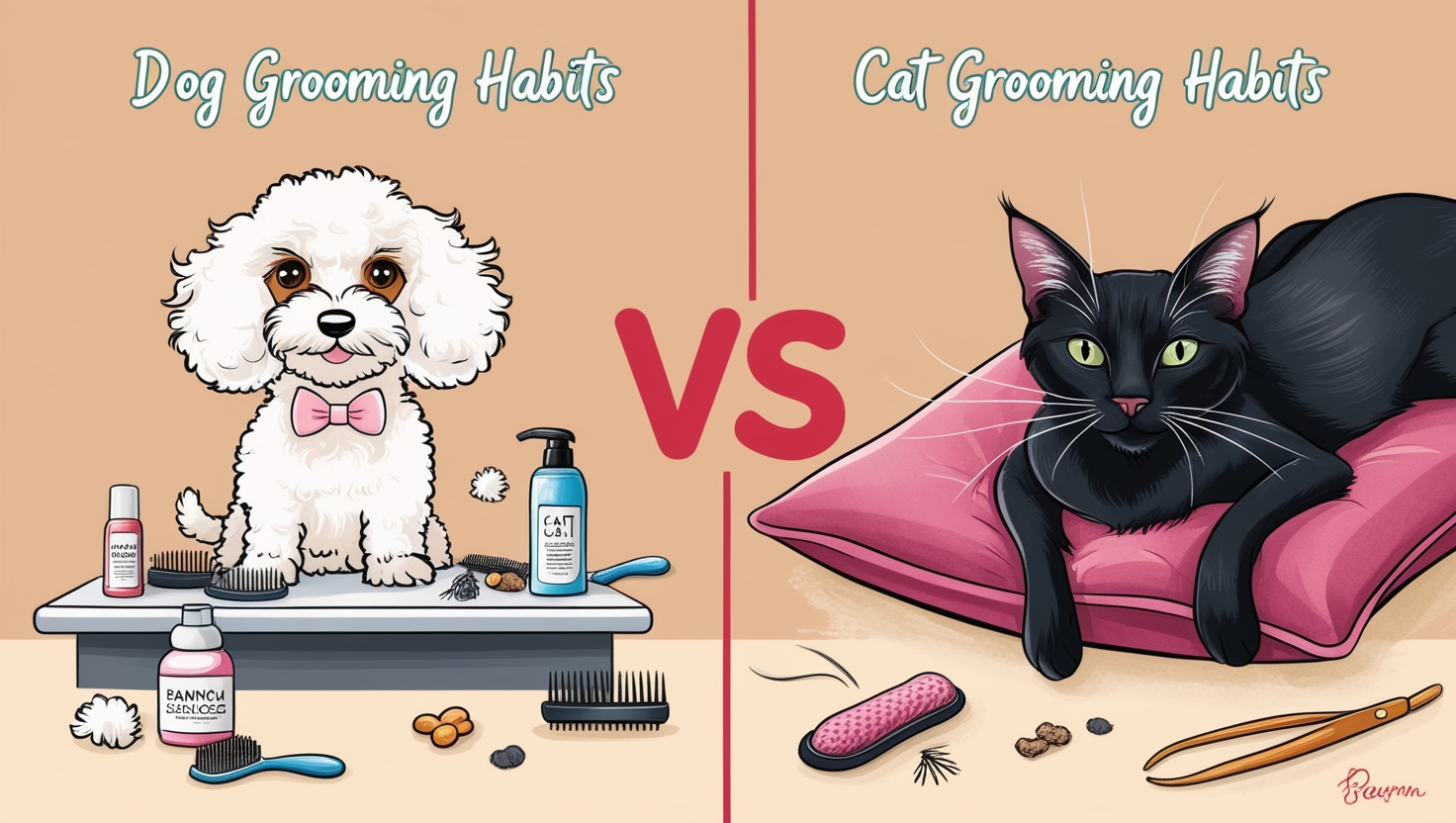From the minute they are born feline cats are learning the fascinating grooming education process through the work of their mothers as they guide them through the information they need to get through everyday hygiene. One of the most important lessons early feline development teaches kittens to groom themselves. The feline parenting… and social learning is shown by the intricate ways cats teach their kittens to groom.
This natural educational process, one of the cornerstones of kitten development, involves innate behaviors, along with skills that kittens will acquire throughout their lives and that will be with them for the rest of their days. Knowing how mother cats teach their kittens to groom can teach you about feline behavior as well as give cat owners a head start at helping pet cats learn the behavior during this critical teaching interval.
The Natural Timeline of Kitten Grooming Development
Soon after birth mother cats begin to groom their kittens, establishing the rule that applies to all animals — proper hygiene. Early care does so much more than keeping things clean — it stimulates vital bodily functions and encourages strong emotional bonds between mother and offspring.
When Mother Cats Start Teaching Grooming
The grooming education process follows a carefully orchestrated timeline:
- Newborn to 2 weeks: Mother provides 100% of grooming care
- 2-3 weeks: Kittens begin showing interest in grooming movements
- 3-4 weeks: First attempts at self-grooming emerge
- 4-6 weeks: Coordinated grooming movements develop
- 6-8 weeks: Regular self-grooming habits form
How Mother Cats Groom Their Kittens: A Step-by-Step Process
The maternal grooming process involves several distinct techniques that mother cats employ to keep their kittens clean and healthy. Each method serves specific purposes in the kittens’ development and hygiene education.
Essential Grooming Techniques Demonstrated by Mother Cats
- Face and Head Cleaning
- Gentle licking around eyes and ears
- Careful cleaning of sensitive nose area
- Thorough attention to whisker pads
- Body Grooming Patterns
- Long, smooth strokes along the back
- Careful attention to stomach and chest
- Systematic cleaning of legs and paws
- Specialized Areas
- Tail cleaning and maintenance
- Genital area stimulation and hygiene
- Paw pad and between-toe cleaning

The Learning Process: How Kittens Master Self-Grooming
Kittens develop their grooming skills through a combination of observation, imitation, and practice. This complex learning process involves several key stages and mechanisms that help kittens become proficient self-groomers.
Key Stages in Kitten Grooming Development
Early Stage (2-3 weeks):
- First awareness of grooming movements
- Observation of mother and littermates
- Initial attempts at licking paws
Middle Stage (4-6 weeks):
- Coordinated grooming movements emerge
- Social grooming with siblings begins
- Development of grooming patterns
Advanced Stage (6-8 weeks):
- Independent grooming routines establish
- Complex grooming sequences master
- Social grooming skills refine
Social Learning and Grooming Behavior
The process of how cats teach their kittens to groom extends beyond simple hygiene practices. Social learning plays a crucial role in developing proper grooming habits and building important familial bonds.
The Role of Social Interaction in Grooming Education
Mother cats utilize several teaching methods:
- Demonstration through regular self-grooming
- Direct grooming of kittens
- Encouraging mutual grooming between siblings
- Positive reinforcement of grooming attempts
Critical Periods in Kitten Grooming Development
Understanding the timeline of grooming skill acquisition helps cat owners support their pets’ development appropriately. Different age ranges bring distinct challenges and opportunities in the learning process.
Age-Specific Grooming Milestones
Birth to 2 Weeks:
- Complete dependence on mother for grooming
- Development of thermal regulation
- Establishment of feeding-grooming associations
2 to 4 Weeks:
- First independent grooming attempts
- Development of motor skills
- Increased awareness of body parts
4 to 8 Weeks:
- Refinement of grooming techniques
- Social grooming initiation
- establishment of regular grooming patterns
Supporting Natural Grooming Education
Cat owners can play an important role in supporting the natural process of how cats teach their kittens to groom. Proper intervention and assistance can help ensure successful development of grooming skills.
Best Practices for Supporting Kitten Grooming Development
Environmental Support:
- Provide appropriate scratching surfaces
- Maintain clean litter areas
- Ensure suitable humidity levels
Physical Support:
- Regular gentle brushing sessions
- Introduction to grooming tools
- Monitoring for any hygiene issues
Common Challenges in Grooming Education
Even in natural settings, kittens may encounter various obstacles while learning to groom. Understanding these challenges helps caregivers provide appropriate support and intervention when necessary.
Identifying and Addressing Grooming Difficulties
Physical Challenges:
- Limited mobility in early weeks
- Coordination development issues
- Dental or tongue problems
Behavioral Challenges:
- Reluctance to self-groom
- Excessive or insufficient grooming
- Social grooming anxiety
The Impact of Environment on Grooming Education
The setting in which kittens learn to groom significantly influences their development of proper hygiene habits. Environmental factors can either support or hinder the natural learning process.
Creating Optimal Learning Conditions
Physical Space Requirements:
- Clean, safe areas for grooming
- Multiple surfaces for different grooming activities
- Appropriate temperature and humidity levels
Social Environment Needs:
- Positive interactions with mother and siblings
- Minimal stress factors
- Regular observation opportunities
Long-term Benefits of Proper Grooming Education
The lessons learned during early grooming education continue to benefit cats throughout their lives. Understanding these long-term advantages helps emphasize the importance of proper grooming development.
Lasting Effects of Early Grooming Training
Physical Benefits:
- Maintained coat health
- Reduced hairball issues
- Better circulation and flexibility
Behavioral Benefits:
- Stress reduction through self-soothing
- Improved social bonds
- Enhanced environmental awareness
Understanding Grooming Communication
The process of how cats teach their kittens to groom involves complex communication systems between mother and offspring. This communication extends beyond simple demonstration to include various sensory and social signals.
Types of Grooming-Related Communication
Verbal Signals:
- Purring during grooming sessions
- Specific vocalizations for grooming initiation
- Encouragement sounds for kittens
Non-verbal Signals:
- Body positioning
- Facial expressions
- Tail positions and movements
Conclusion
Natural Dog in Action: How Cats Learn to Groom Their Kittens is a fascinating example of how cats teach instinctively in the animal kingdom. Healthy social bonds within feline families and the health and well being of future generations of cats are maintained by the essential skill transfer.
Cat owners are encouraged to share their experiences with kitten grooming development in the comments below. Have you seen anything unusual when it comes to teaching mothers or fathers? What bothered your kittens when learning? These insights could help other cat owners to better understand and support this very important developmental period of their cat.
To learn more about feline behavior and development, visit our cat care and training related articles. Remember to subscribe to our newsletter for pet care tips and advice and don’t forget to share with a friend.





